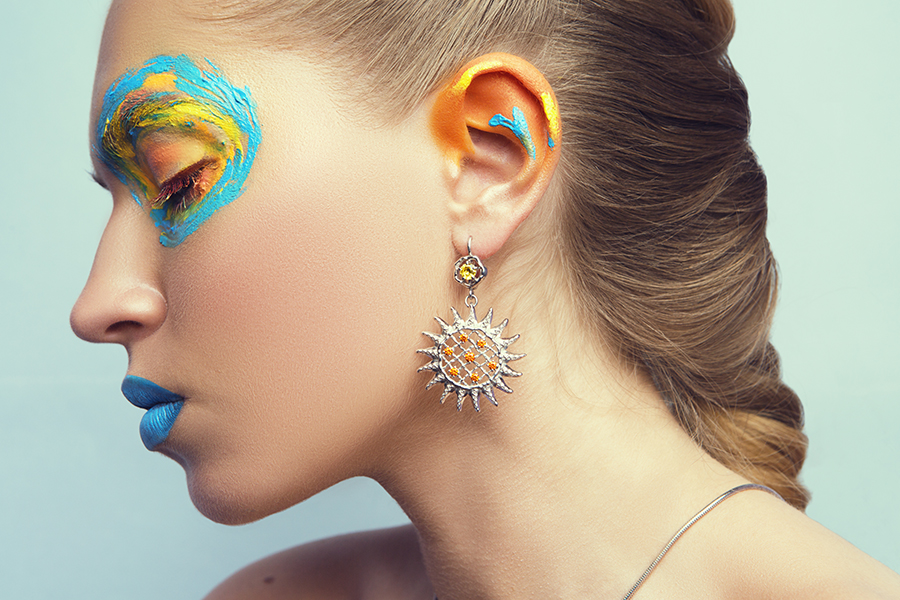Advertising photography is a unique art form. It combines technical skills with creativity to transform ordinary images into memorable, captivating pieces that draw the attention of an audience. If you’re a professional photographer or someone looking to take their advertising photography to the next level, then this article is for you.
We will cover a wide range of topics related to advertising photography, from the basics of working with models and creating the perfect lighting setup to tips and tricks for enhancing your images and bringing them to life. We also have some advice on finding clients and making sure your work stands out in today’s competitive market. This ultimate guide will help you turn your creative vision into effective, engaging visuals that will give your brand more reach and success.
What Is Advertising Photography?
Advertising photography is a type of photography that seeks to capture an audience’s attention and help sell products or services. This unique photography style often incorporates dynamic, eye-catching elements such as props and creative lighting techniques that draw people in. It can be used to promote a company, product, service, or idea.
The art of advertising photography lies in creating esthetically pleasing images that also effectively convey the message of its subject. A photographer must understand their client’s needs and bring them to life through their work. To do this, they have to have an eye for technical details such as composition, perspective, color theory, and lighting. Additionally, they need to be able to tell a story with the photos they take—capturing the emotion of the subject matter so it resonates with the viewer. To make your advertising photography stand out from the rest you must be creative in the approach you take but also remain aware of industry standards and trends in order to stay competitive.
Preparing for a Successful Shoot

Taking great advertising photography that effectively conveys your message requires careful planning and preparation. Here are a few tips for ensuring your shoot is successful:
- Identify your target audience. Understanding who you are trying to reach will help guide the creative direction of the shoot and inform the backdrop, props, and wardrobe.
- Lay out a shot list. A shot list maps out what scenes you’ll need to capture during the session and can help streamline the process on set.
- Plan outfits and makeup in advance. Avoid surprises on set by preparing hair and makeup looks days before the shoot and picking clothing options ahead of time. If possible, make sure everyone wears their own clothing to prevent any health risks due to close contact with others’ garments.
- Brainstorm creative concepts. Take some time to explore unique ways to craft interesting visuals that will draw in viewers’ attention and inspire desire. It pays off to invest in creativity!
By taking these steps prior to the shoot day, you can ensure that you’re well prepared for success—and that all you have to do is show up ready for greatness!
Creating an Impactful Composition
In advertising photography, composition is the most important factor in conveying your message. You want to capture an image that tells a story and draws the viewer in for a closer look.
Here are some tips for creating an impactful composition:
- Establish a sense of depth by using foreground and background objects.
- Use the rule of thirds to draw the viewer’s attention to specific elements in your photo.
- Keep your images simple and well-balanced by avoiding clutter or busy backgrounds.
- Make sure your subject is clear and clearly defined against the background.
- Utilize lines, curves, shapes, textures, and patterns to add visual interest to your image.
- Zoom in close enough so that the details of your subject are easily visible without being too cluttered or distracting from your main message.
- Experiment with unusual angles and perspectives – they can help create dynamic compositions with a feeling of movement or excitement!
- Rearrange elements of your scene until it reflects the desired mood or emotion you’re trying to convey with your image.
Capturing the Perfect Lighting
When it comes to capturing the perfect lighting for your advertising photography, there are a few tips and tricks that you can use to help you get the best results.
Natural Light
Try to use natural lighting whenever possible. This will help to create a more natural and pleasing look in your photos. When using natural light, try to look for open spaces with large windows and lots of indirect light. This will help to avoid shadows and give your images a more consistent look.
Artificial Light
If you are shooting indoors or in an area without much natural light, artificial lighting can be used as an alternative. Stick with soft lights that won’t be too harsh on models or the product you’re photographing (like a soft box), and avoid using flash if at all possible.
Diffuser
Using a diffuser to soften the light is also recommended in purely artificial lighting scenarios. This will create a soft, even glow around any subject or product being photographed, helping it stand out from its environment.
Professional Photography Editing Techniques
Editing photos for advertising can be tricky as you need to make sure the colors, shapes and textures look natural and vibrant. To help with this, there are a few tricks you should consider adding to your arsenal.
Color Correcting
Color correcting should be used to give the photo a realistic tone. Start by making sure the colors appear accurate and then boost contrast, saturation and highlights if needed. Check that everything looks balanced, avoiding any harsh lines or colors that stand out too much.
Cloning & Spot Healing
Cloning is a great tool for removing distractions from your photos while spot healing can be used to reduce dark areas or blemishes. With cloning, you want to be careful not to overdo it as it can leave noticeable gaps in your image which will take away from the realism of the photo.
Sharpening

Sharpening is essential for making sure all your images look crisp and vibrant on both big and small screens. There are many relevant tools in Photoshop like Smart Sharpen or Unsharp Mask which can help you fine-tune photos so they pop off the screen without losing quality.
How to Market Your Advertising Photography Services
Are you looking to bring in more clients and increase the success of your advertising photography business? Taking the right steps to market your services, and reaching out to potential customers is key. Here are a few tips on how to get started:
Leverage Social Media
Social media is a powerful tool for any business, and advertising photography is no exception. Make sure to create an engaging profile on each social media platform, which showcases your best work and helps potential clients get to know you better. It’s also important to post regularly, as well as engage with other users as it can help you build up relationships with potential customers.
Networking & Self Promotion
It pays to reach out to other photographers and industry professionals. Consider joining local photography groups or associations, as it’s a great way for you to form new relationships. You should also explore ways that you can self promote, such as creating a website or blog about your services, which allows for more people to know about what you have to offer.
Diversify Your Offerings
Offering multiple services can help set you apart from other photographers and show diversified skills that can be used in different markets. Think about offering video services in addition to still images, or offering teaching sessions on specific topics related to photography such as lighting techniques or composition tips – this can help increase your visibility and client base even further.
Conclusion
In conclusion, taking your advertising photography to the next level requires a combination of technical and creative elements. You need to master the fundamentals of photography, understand the concept of composition and lighting, and have the confidence to experiment when needed.
Also, no matter what kind of photography you’re doing, always keep the end goal in mind. Ask yourself: What are the client’s objectives? What do I want to communicate? With the right approach and an open mind, you can take your advertising photography to the next level and create compelling, eye-catching images.
Photos in this article belong to the photographer Dasha Art
www.dashafoto.com


